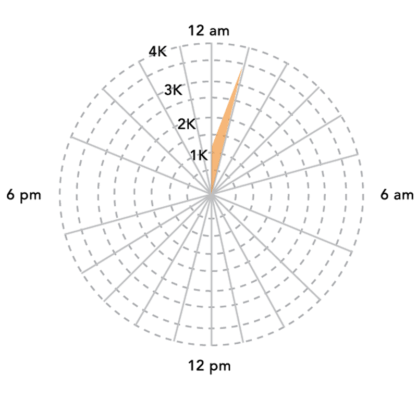Opinions expressed in this article are those of the sponsor. Search Engine Land neither confirms nor disputes any of the conclusions presented below.
Are you still bidding like it’s 2007?
Why conventional bidding methods leave money on the table.
Generating keywords that effectively identify search engine users as likely prospects for a successful campaign is a deeply intuitive process. And with large campaigns incorporating thousands or even millions of keywords, managing keywords can be a full-time preoccupation.
For all the sophistication that search engine marketing (SEM) demands, it’s usually managed by generalists, not data scientists. And while there are exceptions, SEM Managers tend to be much better at the art behind search engine marketing — creative, business analysis, people and relationship management — than they are at the science. And a critical part of that science is in bidding for ad positions.
Bidding is much more complex than it looks
Generally, the metric for success in an SEM campaign is profit — not click volume or impressions. The goal of bidding is to strike the right balance between best position and lowest cost.
Even that would be a relatively simple trial-and-error process if the bidding were only for one keyword, or a handful. But a campaign may represent multiple products, and hundreds — even thousands — of keywords.
And as most SEM Managers know from personal experience, for each keyword, there is no one ideal bid. Ad positions are determined in continuous online auctions, 24 hours a day, every day. The ideal bid as of noon today may be dramatically different from the ideal bid tomorrow — or even at 1:30 p.m. or 2:00 p.m.
Bidding is demand-driven. There are consumers who shop for shoes or airline tickets in the wee hours of the morning when they can’t sleep, but for the most part, search engine users are most likely to click marginal ads at predictable times of day.
It makes no sense to bid the same price for clicks at 2:00 a.m. as you bid for clicks at 2:00 p.m. But that is precisely what many SEM Managers do.
Manually adjusting bids multiple times a day for hundreds or thousands of keywords with any realistic hope of finding a bid level that consistently wins top positions for the ads, around the clock, while maintaining profitability, is simply beyond human analytical capacity.
Moreover, it’s also beyond the capabilities of most automated campaign management systems. The SEM campaign management software platforms now in common use include software modules dedicated to bidding. Unfortunately, the best these systems do is calculate a daily average bid and automatically present that bid at auction — once a day.
But what if you were capable of high-frequency bidding — multiple times per day or hour — and adjusting those bids continuously to deliver the best results at the lowest Cost Per Acquisition (CPA) for that keyword at that time of day?
The common SEM campaign management systems don’t incorporate tools to enable high-frequency bidding. But such tools exist.
Adopters typically have experienced a substantial uplift in revenue and ROI — typically 10 to 50 percent lower cost per acquisition and 10 to 30 percent more revenue versus conventional bidding methods.
These are compelling numbers. They suggest that search engine marketers who haven’t adopted high-frequency bidding tools — or who don’t know they exist — are compromising their campaign results. At worst, they may be compromising their careers. At best, they’re leaving a lot of money on the table.
How automated high-frequency bidding works
High-frequency bidding incorporates sophisticated algorithms based on pattern recognition. For the record, the state of the art is a method called Bayesian Statistics. The purpose of the algorithm is to quickly find and take advantage of meaningful trending in large volumes of often-noisy data. The infrastructure for this includes two key components:
• Big data modeling: Using data gleaned from trends and historical patterns to arrive at the right bid at the right time. The patterns are discovered over time, as a result of actual bids in live auctions.
• High-frequency bidding: The system automatically bids on each keyword multiple times per hour, allowing the advertiser to adapt to fluctuations in optimum bid price continuously throughout the day.

Conventional bidding method

High-frequency bidding method
For advertisers spending millions of dollars per month on paid search, a tiny difference in bid price over thousands of keywords can quickly add up to significant ROI.
Furthermore, the algorithm can be tuned to match its approach to bid optimization to the current goals of your campaign. For example:
• If you are in growth mode, your objectives are likely to be to maximize revenue and/or user growth as much as possible within budget.
• If you are in profit mode, you will want to drive as much profit for your business as possible. This means that beyond maximizing revenue and/or user growth within a budget, you need to know at all times what budget is currently achieving the maximum profit under current market conditions.
High-frequency bidding is feasible right now
The technology for high-frequency bidding — and for testing the results of this approach against those from conventional bidding systems –is readily available today. However, many SEM Managers haven’t adopted it yet. Here are a few reasons why:
• Most conventional SEM software platforms are engineered by generalist business productivity software vendors, and high-frequency bidding is currently outside their in-house development focus.
• High-frequency bidding isn’t in the repertoire of a lot of agencies supporting SEM Managers. Many agencies have long-standing relationships and reciprocal revenue-sharing arrangements with the major campaign management system vendors. So there’s no incentive to move their clients beyond the status quo.
• Some SEM Managers are hesitant to uproot an established business process, one built on an already-installed component of a software platform they originally championed.
The fact is, adopting high-frequency bidding only complements the current solution. It is unlikely to involve undue risk, since actual replacement of the bidding module doesn’t happen until the high-frequency alternative has proven its ability to deliver the performance uplift its vendor claims to provide.
Perhaps the best argument for adoption of high-frequency bidding is its inevitability. With the capability already available, hesitation could be the riskier alternative.
How adoption works
Like any other business process change, adoption of high-frequency bidding requires a champion. This individual or group needs to educate stakeholders about the unique complexity of the bid function, so they can grasp the need to implement a new automation strategy and can greenlight an appropriate vendor.
Once you have engaged with a high-frequency bidding vendor, you start by scheduling a head-to-head test. The more effectively you structure accounts, the easier it will be to conduct a direct comparison between the vendor’s bid results and those you are getting from your current system.
Assuming the data migration goes smoothly and account structuring is reasonably effective, the test is likely to take approximately a month. By then, the algorithm will have discovered meaningful patterns in the bidding, executed against those patterns and produced a measurable uplift in revenue, a reduction of cost and an increase in ROI — in line with the metrics agreed to in advance. You’ll know within 30 days whether you want to move forward.
Granted: Adoption involves change, and change is difficult. How do you know it’s worth it?
It’s a fair question — particularly if there are no immediate incentives to undergo the change. As an SEM manager, your compensation may not even be tied to cost savings or volume growth in a way that would motivate you directly to invest significantly in performance improvement. But odds are, you report to someone whose comp is tied to those performance metrics. That person cares.
To learn more about high-frequency bidding or [24]7’s Customer Acquisition Cloud solutions, click here.
Related stories

![Sponsored Content: [24]7.ai](/images/authors/SponsoredContent24-7-lg.jpg)